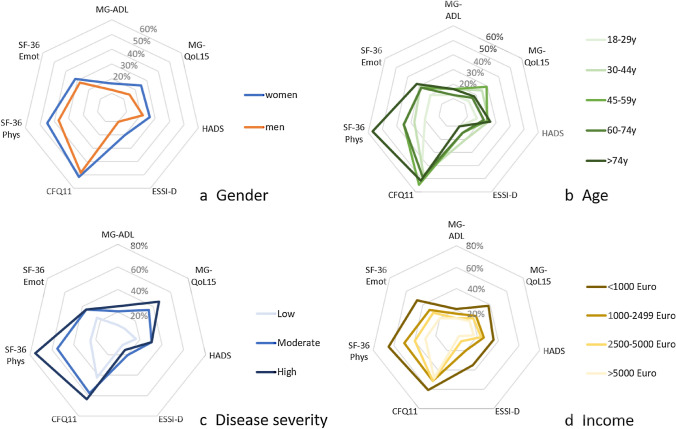Fig. 3.
Net diagrams integrating the Myasthenia gravis Activities of Daily Living Score (MG-ADL), the Myasthenia gravis Quality of life Score (MG-QoL15), the Hospital Anxiety and Depression Scale (HADS), the ENRICHD Social Support Inventory (ESSI-D), the Myasthenia gravis Quality of life Score (MG-QoL15), the Hospital Anxiety and Depression Scale (HADS), the ENRICHD Social Support Inventory (ESSI-D), the Chalder Fatigue Scale (CFQ11) and the Physical Functioning (SF-36 Phys) and Emotional wellbeing (SF-36 Emot) domain of the Short Form 36 (SF-36) in different subgroups: a Gender, b age groups, c groups of different disease severity and d. net household income groups. The further out the lines are in the net, the higher and worse the single score value: Women (a), old patients (b), patients with high disease severity (c) and low income (d) do have the highest burden of disease, composed of high single score value

